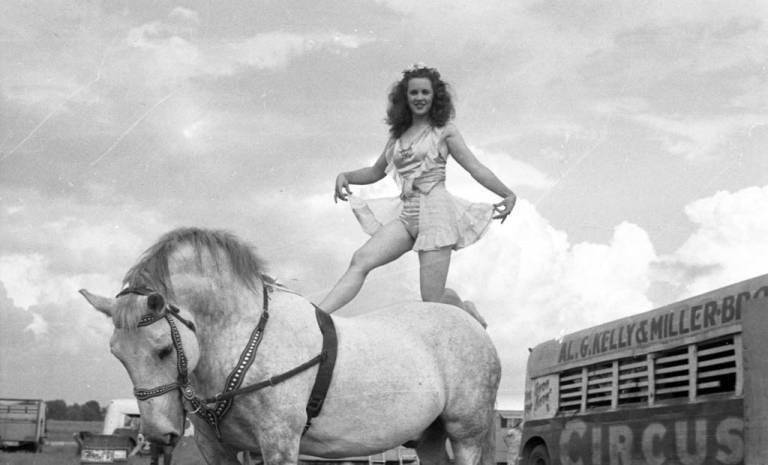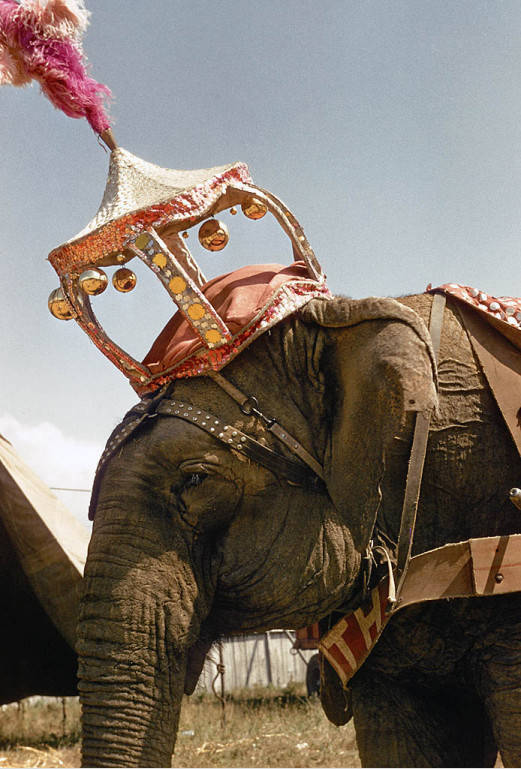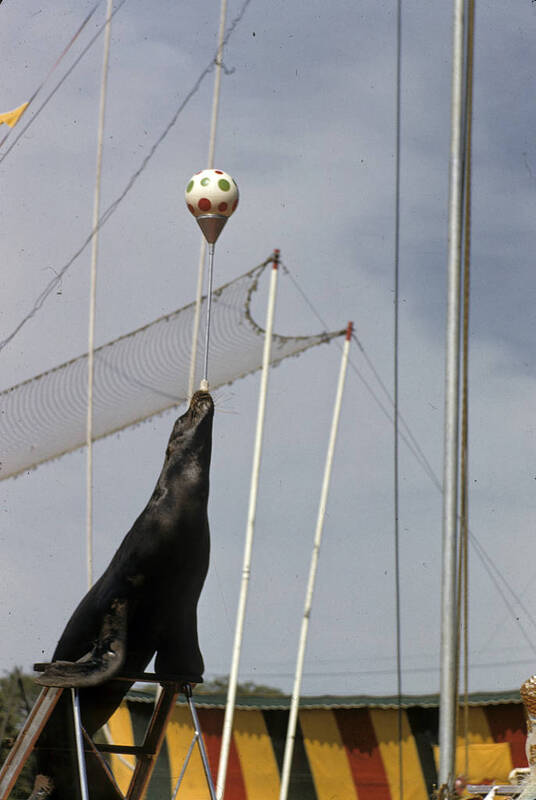20th Century Circuses in Illinois: Animals
The menagerie, or a show featuring a variety of animals, was popular in Europe as early as the 1700s, and became part of circus tradition. While the treatment of these animals would most likely be considered cruel and abusive today, crowds were excited to see them nonetheless. Anti-animal cruelty organizations questioned circuses as early as the 1880s, and the ethicality of keeping animals in a circus environment remains a point of contention to this day, with some circuses choosing to abandon the use of animal performers.
In her book on circus history, Stoddart notes that “Many circus historians would agree that the ring and the performing horse are the very foundation of the circus” [3]. “Riding schools,” or circuses that featured mainly riders and vaulters, were popular in England during the 19th century. When the circus began to grow in popularity in America, horses were often featured, alongside a variety of other animals.
Performer on Horse. Sverre O. Braathen, photographer. 1948. Illinois State Univerisity.
Much like aerialist acts, both men and women rode “trick horses” (the name for performing horses). Although today these performers would probably be known as vaulters, they were typically called acrobats or bareback riders during the early 20th century.
Bareback Rider on Horse. Sverre O. Braathen, photographer. July 19, 1950. Illinois State University.
The animals had to be made accustomed to the circus’s music so that they would not be frightened during a show. In some circuses, musicians would play music while horses, elephants, and other animals were being trained so that they could learn to walk in tempo.
Elephant Close-Up. Sverre O. Braathen, photographer. July 15, 1954. Illinois State University.
Circus animals had to learn tricks, of varying levels of difficulty. Seals balanced objects on their noses, monkeys performed alongside clowns (or even as clowns, wearing specially made costumes), and, somehow, elephants were taught to ride bikes.
Seal Balancing a Ball. Sverre O. Braathen, photographer. 1957. Illinois State University.
[3] Stoddart, Rings of Desire, 3.




